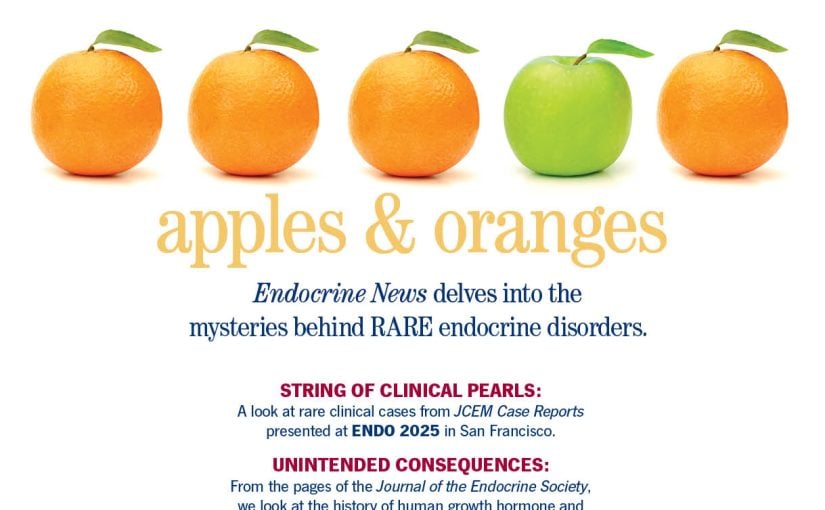When surgical treatment for three patients with pheochromocytoma was delayed due to COVID-19 restrictions, clinical endocrine fellow Emily A. Japp, MD, and team at the Icahn School of Medicine at Mount Sinai in New York City found a unique solution. Going beyond clinical guideline recommendations while closely monitoring the patients remotely resulted in a tailored treatment approach suited to each patient’s unique needs and circumstances.
COVID-19 upended just about everything in 2020, reshaping how we live, work, and interact. The ability to seek healthcare was part of this dramatic societal change. Unless a patient was in dire health straits, seeing a clinician in person was usually not possible, both because those in the healthcare field were already stretched so thin and because leaving the home for anything nonessential was prohibited.
- In March 2020, three patients with pheochromocytoma presented to Mt. Sinai Hospital in New York City, just before the city was shut down, necessarily delaying their surgical treatment.
- Endocrinologists successfully opted for medical management well beyond what current guidelines recommend as well as close patient self-monitoring and regular remote communication.
- The cases demonstrate that prolonged medical management is feasible and effective in pheochromocytoma patients with mild symptoms and well-controlled blood pressures.
In “Management of 3 Cases of Pheochromocytoma During the COVID-19 Pandemic in New York City: Lessons Learned,” published in Journal of the Endocrine Society in February, lead study author, Emily A. Japp, MD, and her mentor, Alice C. Levine, MD, both from the Division of Endocrinology, Diabetes, and Bone Disease, Department of Medicine at the Icahn School of Medicine at Mount Sinai, in New York, N.Y., as well as coauthors Amanda Leiter, MD, and Effie A. Tsomos, MD, (both co-fellows of Japp) and medical resident Sarah A. Reda, MD, explore a ramification of COVID-19 that until now may have been overlooked — how do clinicians manage non-emergent disease that would normally be treated surgically during a pandemic?
Hit Pause
Somewhat unusually, in this pandemic-related story, the lessons learned are positive, and some optimistic extrapolations can also be made. But let’s start from the beginning. In March 2020, Japp and team met three patients presenting with newly diagnosed pheochromocytoma. That same month, “New York on Pause” went into effect, a statewide, 10-point executive order issued by New York Governor Andrew M. Cuomo, that among other things, mandated the temporary closing down of all nonessential businesses and urged those who were sick, immunosuppressed, or elderly to stay at home and use telemedicine to access healthcare. Although the definitive treatment for pheochromocytoma is adrenalectomy, in cases where the blood pressure is controllable with medications, this surgery is considered semi-elective so Japp and team had to get resourceful.
“We learned that in select cases of pheochromocytoma, prolonged medical management is safe and effective. This may serve as a guide in the future for these patients so that there is ample time and resources to refer them for their surgical management to centers of excellence for optimal outcomes.” – Emily A. Japp, MD, Division of Endocrinology, Diabetes, and Bone Disease, Department of Medicine, Icahn School of Medicine, Mount Sinai, New York, N.Y.
Fortunately, all three cases were uncomplicated, but, even so, pheochromocytoma has earned the nickname “ticking time bomb” because of its capacity to release large amounts of catecholamines into the system. “This adrenergic crisis can lead to life-threatening hypertension, cardiomyopathy, and pulmonary edema,” explains Japp. “Prompt medical management in preparation for surgical adrenalectomy is necessary, because the adrenergic crisis can occur spontaneously or be triggered by stress, certain medications, trauma, and infection.”
Endocrine Society guidelines from 2014 suggest one to two weeks of medical management prior to adrenalectomy to minimize perioperative complications, and all three patients — females ages 60, 67, and 84 years — were on medication at presentation. “Case 2 had undergone the traditional medical management for pheochromocytomas, which is alpha-adrenergic blockade followed by beta-adrenergic blockade. Cases 1 and 3 were managed mainly with calcium-channel blockade, a regimen that has been cited by the Endocrine Society and some studies to be appropriate as monotherapy if patients have very mild preoperative hypertension,” Japp says. “Depending on the patient’s clinical presentation, alpha-adrenergic blockade or calcium-channel blockade are both options.” Under normal circumstances, after this brief period of medical therapy, patients with pheochromocytoma are advised to undergo semi-urgent adrenalectomy.
The daunting task before Japp and team was to safely prolong this medical management for an unknown duration until the three patients could safely be admitted for surgery. “The pandemic created a reliance on telemedicine and a delay in semi-elective surgeries,” she says. Moreover, they needed to personalize treatment based on individual patient characteristics (e.g., presenting symptoms, etc.). Their strategies involved having the patients monitor their symptoms, blood pressure, and heart rate daily at home and report in to a medical provider via telemedicine and biweekly phone calls. An endocrinology on-call service was available if alarming vital signs or symptoms emerged that might signal a catecholaminergic crisis.
With this close monitoring and tailored management, Japp and team were able to see their three patients through the shutdown until they could undergo surgery, at 7, 13, and 18 weeks’ post-presentation, respectively. “We learned through this case series that prolonged medical treatment of milder cases of pheochromocytoma is feasible and can be safe with close monitoring and cooperation between the patient and the physicians,” she says.
Every Minute Counts
These success stories are not the only lessons learned, however. The team does not rule out the possibility that an even longer duration of medical management might be possible. Also, even when the pandemic is over, some of what Japp and team implemented to get through the crisis may continue to be relied on: “A major lesson learned related to the circumstances posed by the pandemic is how useful telemedicine has been as a tool to extend care to patients, especially in the field of endocrinology. It appears that telemedicine will be more widely utilized to promote engagement with patients, especially those who are of underserved populations.”
Telemedicine is not without its limitations, of course, but is still an encouraging development in terms of reaching more patients. Telemedicine works best when patients are motivated. “In the management of pheochromocytoma,” Japp elaborates, “prolonged outpatient medical management of this disorder will only be feasible in cases where the patients are motivated, educated, and able to provide the essential data regarding their symptoms, blood pressures, and pulse rates.”
Although one lesson learned is not exactly new; the extenuating circumstances posed by the pandemic nevertheless brought it into stark relief — individualizing care leads to better outcomes. In endocrinology, says Japp, this means “[tailoring] medical management to patients depending on their ages, symptoms, signs, comorbidities, and biochemical profiles.”
“This adrenergic crisis can lead to life-threatening hypertension, cardiomyopathy, and pulmonary edema. Prompt medical management in preparation for surgical adrenalectomy is necessary, because the adrenergic crisis can occur spontaneously or be triggered by stress, certain medications, trauma, and infection.”– Emily A. Japp, MD, Division of Endocrinology, Diabetes, and Bone Disease, Department of Medicine, Icahn School of Medicine, Mount Sinai, New York, N.Y.
Finally, prolonging medical management past previously issued guidelines might become the new normal for mild cases, even when circumstances do not dictate. This approach would allow the patient to undergo surgery at a center with a team that includes anesthesiologists, endocrinologists, and surgeons with considerable experience and expertise in pheochromocytoma.
“Rare diseases such as pheochromocytoma are best managed by specialized centers with sufficient volume and expertise to manage the patients from the time of diagnosis through the postoperative period,” Japp explains. “We learned that in select cases of pheochromocytoma, prolonged medical management is safe and effective. This may serve as a guide in the future for these patients so that there is ample time and resources to refer them for their surgical management to centers of excellence for optimal outcomes.”
Horvath is a freelance writer based in Baltimore, Md. In the March issue she wrote about the ENDO 2021 session, “Does the Treatment of Hyperthyroidism Lead to Cancer?”

 “We learned that in select cases of pheochromocytoma, prolonged medical management is safe and effective. This may serve as a guide in the future for these patients so that there is ample time and resources to refer them for their surgical management to centers of excellence for optimal outcomes.”
“We learned that in select cases of pheochromocytoma, prolonged medical management is safe and effective. This may serve as a guide in the future for these patients so that there is ample time and resources to refer them for their surgical management to centers of excellence for optimal outcomes.”